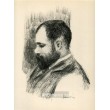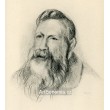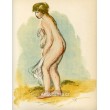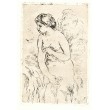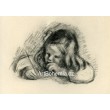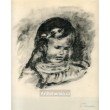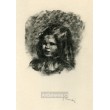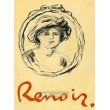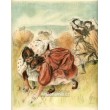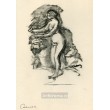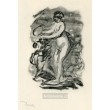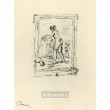Košík
0
x
Produkty
(prázdný)
Žádné díla
Bude determinováno
Dopravné a balné
0 Kč
Celkem
Produkt byl úspěšně přidán do nákupního košíku
Počet
Celkem
0 ks zboží.
1 dílo v košíku.
Za díla:
Doručení a balné:
Bude determinováno
Celkem
Kategorie
- grafiky/tisky
- obrazy
- kresby
- plakáty
- fotografie
- exlibris
- bibliofilie
- knihy/katalogy
- starožitnosti
- sochy/plastiky
- sklo
-
Hnutí
- abstrakce
- art-deco
- čs.avantgarda/moderna
- expresionismus
- fauvismus
- impresionismus
- kubismus
- naivní umění
- op-art
- poetismus
- pop-art
- realismus
- secese
- sociální kritika
- soudobá tvorba
- surrealismus
- světová avantgarda/moderna
- Škola prof. Albína Brunovského
- Škola prof. Zdeňka Sklenáře
- Škola prof.Julia Mařáka - mařákovci
- Žánr
- Zprávy/NEWS
- Doporučujeme
Nová díla
-

Toiletta, opus 13
387 200 Kč -

Johanka z Arku
4 114 Kč -

Kvetoucí strom
2 662 Kč
-

La Comédie Humaine (30) 25.12.1953
242 Kč -80% 1 210 Kč
Hnutí
- abstrakce
- art-deco
- čs.avantgarda/moderna
- expresionismus
- fauvismus
- impresionismus
- kubismus
- naivní umění
- op-art
- poetismus
- pop-art
- realismus
- secese
- sociální kritika
- soudobá tvorba
- surrealismus
- světová avantgarda/moderna
- Škola prof. Albína Brunovského
- Škola prof. Zdeňka Sklenáře
- Škola prof.Julia Mařáka - mařákovci
Žánr
NEJŽÁDANĚJŠÍ UMĚLCI
- Anderle Jiří
- Augustovič Peter
- Benca Igor
- Beneš Karel
- Bím Tomáš
- Born Adolf
- Brun Robert
- Brunovský Albín
- Boštík Václav
- Bouda Cyril
- Bouda Jiří
- Braque Georges
- Brázda Jiří
- Buffet Bernard
- Cézanne Paul
- Čapek Josef
- Čápová Hana
- Dalí Salvador
- Demel Karel
- Dudek Josef
- Dufy Raoul
- Effel Jean
- Felix Karol
- Filla Emil
- Giacometti Alberto
- Grosz George
- Chagall Marc
- Istler Josef
- Janeček Ota
- Jiřincová Ludmila
- Kandinsky Wassily
- Kĺúčik Peter
- Komárek Vladimír
- Kulhánek Oldřich
- Kupka František
- Lada Josef
- Lhoták Kamil
- Matisse Henri
- Miró Joan
- Mucha Alfons
- Muzika František
- Picasso Pablo
- Pileček Jindřich
- Reynek Bohuslav
- Sukdolák Pavel
- Suchánek Vladimír
- Svolinský Karel
- Šíma Josef
- Špála Václav
- Švabinský Max
- Švengsbír Jiří
- Tichý František
- Toulouse-Lautrec Henri de
- Toyen
- Trnka Jiří
- Váchal Josef
- Vik Karel
- Warhol Andy
- Zábranský Vlastimil
- Zoubek Olbram
- Zrzavý Jan
Seznam děl umělce Renoir Auguste
(1841 - 1919) Francouzský malíř a sochař; syn maloměstského krejčího, přistěhoval se v dětství s rodinou do Paříže, kde se v mládí učil malbě porcelánu a vějířů, jež ho sblížila s malířstvím francouzského rokoka; rokokový senzualismus vyhovoval malířově
(1841 - 1919) Francouzský malíř a sochař; syn maloměstského krejčího, přistěhoval se v dětství s rodinou do Paříže, kde se v mládí učil malbě porcelánu a vějířů, jež ho sblížila s malířstvím francouzského rokoka; rokokový senzualismus vyhovoval malířově vrozenému sklonu k vychutnáváni smyslových požitků. 1862 vstoupil do Gleyrova ateliéru, kde se sešel s C. Monetem, Bazillem a A. Sisleyem, s nimiž také příštího roku školu opustil, aby začal malovat v plenéru ve fontainebleauském lese a koncem šedesátých let v La Grenouillére. 1870 narukoval k jezdeckému pluku. Po válce se začal opět intenzívně stýkat se svými uměleckými přáteli, s nimiž se účastnil první impresionistické výstavy 1874; jeho obraz Lóže byl kritikou Ostře napadán. S Monetem maloval v Argenteuil. Renoir se účastnil výstav impresionistů také 1876, 1877, 1880, 1881, 1882 a 1886. V Paříži rád navštěvoval zahradní tančírny, kde ho okouzlovalo veselí lidových zábav; odtud si vybíral náměty pro své figurální kompozice (Tanec v Moulin de la Galette, 1876; Snídaně veslařů, 1880). Vlivem žen, jež portrétoval, mohl 1879 vystavovat v Salónu. 1885 odjel do Itálie; navštívil Benátky a Řím, kde ho zaujaly Raffaelovv fresky ve Villa Farnesina; v Neapoli byl okouzlen pompejskými malbami. Pod vlivem italské cesty začalo jeho klasicistní období (1883-85). 1883 uspořádal Durand-Rud ve své pařížské galerii první samostatnou výstavu jeho díla. V devadesátých letech vyvrcholilo Renoirovo smyslové zaujetí půvabem ženského těla; nejmilejším modelem jeho aktů byla služka Gabriela. V pozdním období se Renoir zabýval také sochařstvím; sám vymodeloval pouze podobiznu svého syna Coco (kolem 1970-8), všechna ostatní díla provedl podle jeho pokynů mladý pomocník Richard Gumo. Renoir nepřestal malovat ani ve vysokém stáří; když v posledních letech ochrnul, dával si štětec k ruce přivazovat.
Renoirovo rané dílo poznamenal vliv Courbetův a Corotův; courbetovským realismem se vyznačuje jeho první rozměrnější kompozice Krčma matky Anthony, malovaná ještě v tmavých tónech. V Salánu 1867 vystavoval obraz Diany lovkyně, v němž poprvé vyjádřil smyslové opojení nahým ženským tělem, jež se stane hlavním motivem jeho příštího díla; téhož roku v obraze Lisa zobrazil animální typ svých žen, k němuž se bude stále vracet. Tyto obrazy provedl valérovou malbou v těžkých zemitých tónech. Teprve vlivem Moneta na konci šedesátých let začal Renoir prosvětlovat paletu, rozkládat lokální tón na skvrny čistých barev a pozorovat proměny barev při různém osvětlení a za různé atmosféry. Výsledkem tohoto před-impresionistického období jsou obě variace obrazu La Grenouillére (1868-69).
Po 1870 sílí v Renoirově malbě impresionistické rysy, štětec se uvolňuje a tvary předmětů se rozpouštějí ve světle. Na první výstavě impresionistů vystavil obraz Lóže, založený na harmonii bílé, černé a šedivé. V Argenteuil maloval krajiny a figurální obrazy v plném slunečním světle, využívaje kontrastů teplých světel a studeně modrých stínů. V Paříži se opájel barevnými fériemi lidových tanečních zábav; obraz Tanec v Moulin de la Galette (1876) je namalován z růžových, modrých a fialových světlých tónů, nanášených volným rukopisem v dělených skvrnách. Z okouzlení krásou věčného ženství vyrostly Renoirovy podobizny, jimiž záhy získal společenský úspěch a uznání.
Cesta do Itálie urychlila jeho stylovou proměnu; proti impresionistické uvolněnosti pociťoval novou potřebu pevnější linie a plastického tvaru. V obraze koupání (1883-5) se snažil dosáhnout chladného tónu pompejských fresek; vliv Ingresův je zvlášť patrný v obraze Koupající se ženy (1885). Po svém klasicistickém období se vrátil Renoir k impresionistickému nazírání, jež však nechápal doktrinářsky; například černou považoval za barvu a nikdy se jí nevzdal. Hlavním motivem pozdního malířova díla se stal Ženský akt, jehož smyslnou přitažlivost sugerují hřejivé tóny červení, odstupňovaných do fialové a oranžové. V posledních letech si Renoir vybíral náměty pro své obrazy z okruhu své rodiny a přátel. Renoir sice nebyl pravověrným impresionistou ve smyslu Monetově, ale teprve impresionismus mu umožnil plně vyjádřit jeho osobité vlastnosti rozeného koloristy, pokračující v tradici francouzského rokoka. S Monetem a E. Degasem spojuje Renoira výlučný zájem o figuru; nad ně vyniká svým eroticky podbarveným smyslovým zájmem o nahé ženské tělo a jeho vlastnosti; nebyl psychologem ani pronikavým pozorovatelem. Ve svých kompozicích opakoval stále stejné typy, pokaždé však s novým zaujetím pro barevný půvab jejich zjevu. Renoir nebyl žádný intelektuál; dal se ovládat svým vrozeným instinktem; tragický pocit byl mu stejně vzdálen jako potřeba teoretického prohloubení tvorby. Ze skupiny impresionistů patřil k nejméně problematizujícím, ale zato nejpůvabnějším malířům. Jeho syn Jean, proslulý filmový režisér, je autorem zajímavé knihy vzpomínek na umělcův život.
Vyňato z Encyklopedie světového malířství - Autorský kolektiv pod vedením PhDr. Sávy Šabouka DrSc.; nakl. Academia ČSAV 1975.
In: http://www.artchiv.cz/show.php3?action=explore_bio&id=165&session=04nd10r10y07h53t2006
Pierre Auguste Renoir was one of the greatest of the painters affected by Impressionism. He worked from the age of thirteen in a china factory and his early training as a painter on porcelain predisposed him towards the light palette of Impressionism.
In 1861, he spent some time in the teaching studio of the academician Gleyre, where he met Monet, Bazille, and Sisley. He also went to The Louvre often, and was particularly interested in Watteau, Boucher, and Fragonard. All his life he was conscious of the need to study art in museums, and dissatisfied with the purely visual aspects of Impressionism. The main influence on his early career was Courbet, until about 1868, and during this time he used heavy impasto and rather dark colour. In 1868, he and Monet worked together on the Seine, and as a result of painting continually out-of-doors - and of Monet's influence - his colour became lighter and higher in key, and his handling freer, the whole canvas being managed in patches of coloured light and shadow without any definite drawing. He exhibited in the first three Impressionist exhibitions, and then in the seventh.
After 1877, he was successful in getting some of his portraits into the Salon (e.g. Mme. Charpentier and her Children; 1878: New York Metropolitan Museum), and was unwilling to risk the market that this offered for the sake of the often disadvantageous advertisement provided by the group shows. In 1879 (and again in 1882), he visited North Africa, was in Guernsey in 1880, and made his first of several trips to Italy in the winter of 1881-82. He later travelled widely, visiting London, Holland, Spain, Germany, studying in museums, and he deeply admired Raphael and Velazquez - more even than Rubens, to whose art his own was so much indebted.
After his first Italian journey his drawing became much firmer, his Impressionism much less the spontaneous result of purely visual stimuli than the conscious use of colour to recreate nature and form, and this in turn involved departure from Monet's form of Impressionism - direct painting before the object - by the adoption of a more elaborate technique, with preparatory drawings and successive sessions on the canvas while the figure and its setting were worked up: "Il faut meubler la toile," was his way of putting it. Where his early works include portraits, landscapes, flowers and groups of figures in settings of cafe, dance-hall, boats, or riverside landscapes, his late works are mostly nudes, or near nudes. The warmth and tenderness of pink and pearly flesh entranced him and gave him full scope for his favourite colour schemes of pinks and reds, and the exploitation of a chosen colour-scheme is in itself an unimpressionist idea: "Ii faut avoir," he said "le sentiment des fesses et des tetons."
In 1906, he settled in Cagnes in the south of France, but he was already crippled with arthritis, which finally rendered him completely helpless, so that his last pictures were painted with brushes stuck between his twisted fingers. He also "made" a certain amount of sculpture - "dictated" rather, since the clay was worked by an assistant who added or removed on his instructions, to create rather Maillol-like figures of impressive simplicity and solidity. In his last years, he saw a good deal of Matisse, who lived nearby, and he was interested in and sympathetic to the ideas behind Fauvism.
He painted about 6,000 pictures. There is a large collection in Paris (Museum de l'Impressionnisme), and there are works in Berlin; Boston (Mus.); Budapest; Cambridge, Massachusetts (Fogg); Cardiff; Chicago; Cologne (Wallraf-Richartz); Essen; Glasgow; London (NG, Tate, Courtauld Inst.); Manchester; Ottawa; Rouen; Săo Paulo; Stockholm; Toronto; and Washington (NG, Phillips). America is particularly rich in Renoirs, since they were bought there when the artist was still unappreciated in Europe. Williamstown, Massachusetts has a particularly instructive contrast between nudes by Renoir and Bouguereau.
In: http://www.centaurgalleries.com/Artists/Artist.cfm?ArtistID=00153
Pierre-August Renoir, one of the best loved of the Impressionists, always painted the beauties of nature, harmonious landscapes, flowers, fruit, children and women. He began his career at the age of thirteen as a painter on porcelain in a factory in Paris. He soon gave this up in favour of painting fans and decorating blinds which he did until 1862, when he had saved enough money to support himself without work for a time, thus enabling him to enrol in classes at the Ecole des Beaux-Arts. He entered the atelier of Charles Gleyre, and there met and became firm friends with Claude Monet, Alfred Sisley and Frederic Bazille.
The following year Manet's Dejeuner sur l'Herbe caused uproar at the Salon des refuses, and made a deep impression on the group of young painters. They began to go on painting expeditions to the Forest of Fontainebleau, where Renoir was befriended by the painter Diaz, who advised him to drop black from his palette, and who also helped him to sell some of his work.
During the early years, Renoir and Monet sometimes worked side by side, painting the same scenes such as La Grenouillere (1869) and views at Argenteuil on the Seine, where the two painters spent the summer. That year, Renoir and Monet and a number of other artists including Berthe Morisot, Pissarro and Degas who, like themselves were disaffected with the Salon Jury, held the first exhibition of the group which was to become known as the Impressionists.
They exhibited eight times between 1874 and 1886, Renoir taking part on four occasions. Feeling that he was sacrificing too much to the vagaries of ever-changing light and the atmospheric affects sought by Impressionism, Renoir moved away from the group during the 1880's and returned to a more classical style, in which line and form assumed an importance not found in his work of the previous decade.
In: http://www.artnet.com/artist/14139/pierre-auguste-renoir.html
Renoir, an artist or an industry?
The city of Phoenix in Arizona, is beter known for tis basketball team, the Suns, than for its artistic scene. Things are going to change. The Art Newspaper has just revealed that the owners of the the Pierre-Auguste Renoir archives which they bought f or a mere 135 000$ in May 2005 (at a small auction house in Maryland), are gallery owners in Scottsdale, a fancy neighborhood in Phoenix. They have delared they intend to dedicte a small museum to the letters, photographs and docuemtns which no French museum deemed worthy of attention. This honorable project is accompanied by a side that is les so. The business plan is to produce a great number of copies of Renoir's scultures (of which his assistant Richard Guino is the co-author, as Renoir was affected by severe rhumatism at the time they were made). In doing this the gallery owners overstep the French copyright law. They will reproduce the works on T-shirts, glasses and carpets and in doing so will rake in billions of euros in revenues... After the Picasso Citroen , will we have the Renoir toilet paper? Modern art really leads to everything.
The website of the Rima of Scottsdale gallery
In: Art-of-the-day.info [contact@art-of-the-day.info]
The son of a tailor from Limoges, Renoir starting working as an apprentice at the age of fourteen in a porcelain decorator’s shop. In 1862, with the money he earned painting cloth fabric, he enrolled at the School of Fine Arts.
Renoir joined the Gleyre studio and became friends with Monet, Bazille and Sisley. He participated in all of the impressionist exhibitions, except for those in 1880 and 1886, when he stayed away due to a falling out with Degas. Although it may seem curious today, Renoir sold few of his works and his financial situation was anything but comfortable.
Renoir devoted most of his painting to portraiture work. One must remember, at the time it was a question of survival for artists… From sketches to more ambitious portraits, Renoir played all the notes of fashionable art’s music of the period. Every element of 20th century Parisian Society, with its flamboyant figures or dark characters, is represented by the herald of Impressionism. He covered his canvas with dabs of bursting color arranged in tight patterns, creating color transparency at the surface, truly a new spatial coherence for the period, while underneath lay a real pictorial revolution, radically modern, ending in a deluge of criticism.
Renoir’s fame began when his work was accepted at the Salon. His favorite themes were landscapes, portraits and still life. Renoir was the master of all times when it came to capturing the reflection of air, the smile and charm of his characters, all delicately blended with sensuality and great doses of spontaneity.
International market value.
http://www.operagallery.com/artist/RENOIR_449;0;0.aspx
Pierre Auguste Renoir was born in Limoges on February 25, 1841. As a child Pierre Auguste Renoir worked in a porcelain factory in Paris, painting designs on china; at 17 Renoir copied paintings on fans, lamp shades, and blinds. Renoir studied painting formally in 1862-63 at the academy of the Swiss painter Charles Gabriel Gleyre in Paris. Renoir's early work was influenced by two French artists, Claude Monet in his treatment of light and the romantic painter Eugène Delacroix in his treatment of color.
Pierre Auguste Renoir first exhibited his paintings in Paris in 1864, but he did not gain recognition until 1874, at the first exhibition of painters of the new impressionist school. One of the most famous of all impressionist works is Renoir's Le Bal au Moulin de la Galette (1876, Musée du Louvre, Paris), an open-air scene of a café, in which his mastery in figure painting and in representing light is evident. Outstanding examples of his talents as a portraitist are Madame Charpentier and Her Children (1878, The Metropolitan Museum of Art, New York City) and Jeanne Samary.
Pierre Auguste Renoir fully established his reputation with a solo exhibition held at the Durand-Ruel Gallery in Paris in 1883. In 1887 he completed a series of studies of a group of nude female figures known as The Bathers (Philadelphia Museum of Art). These reveal his extraordinary ability to depict the lustrous, pearly color and texture of skin and to impart lyrical feeling and plasticity to a subject; they are unsurpassed in the history of modern painting in their representation of feminine grace. Many of his later paintings also treat the same theme in an increasingly bold rhythmic style. During the last 20 years of his life Renoir was crippled by arthritis; unable to move his hands freely, he continued to paint, however, by using a brush strapped to his arm. Pierre Auguste Renoir died at Cagnes, a village in the south of France, on December 3, 1919.
In: http://www.georgetownframeshoppe.com/pierre_auguste_renoir_biography.html
Zobrazit
Renoirovo rané dílo poznamenal vliv Courbetův a Corotův; courbetovským realismem se vyznačuje jeho první rozměrnější kompozice Krčma matky Anthony, malovaná ještě v tmavých tónech. V Salánu 1867 vystavoval obraz Diany lovkyně, v němž poprvé vyjádřil smyslové opojení nahým ženským tělem, jež se stane hlavním motivem jeho příštího díla; téhož roku v obraze Lisa zobrazil animální typ svých žen, k němuž se bude stále vracet. Tyto obrazy provedl valérovou malbou v těžkých zemitých tónech. Teprve vlivem Moneta na konci šedesátých let začal Renoir prosvětlovat paletu, rozkládat lokální tón na skvrny čistých barev a pozorovat proměny barev při různém osvětlení a za různé atmosféry. Výsledkem tohoto před-impresionistického období jsou obě variace obrazu La Grenouillére (1868-69).
Po 1870 sílí v Renoirově malbě impresionistické rysy, štětec se uvolňuje a tvary předmětů se rozpouštějí ve světle. Na první výstavě impresionistů vystavil obraz Lóže, založený na harmonii bílé, černé a šedivé. V Argenteuil maloval krajiny a figurální obrazy v plném slunečním světle, využívaje kontrastů teplých světel a studeně modrých stínů. V Paříži se opájel barevnými fériemi lidových tanečních zábav; obraz Tanec v Moulin de la Galette (1876) je namalován z růžových, modrých a fialových světlých tónů, nanášených volným rukopisem v dělených skvrnách. Z okouzlení krásou věčného ženství vyrostly Renoirovy podobizny, jimiž záhy získal společenský úspěch a uznání.
Cesta do Itálie urychlila jeho stylovou proměnu; proti impresionistické uvolněnosti pociťoval novou potřebu pevnější linie a plastického tvaru. V obraze koupání (1883-5) se snažil dosáhnout chladného tónu pompejských fresek; vliv Ingresův je zvlášť patrný v obraze Koupající se ženy (1885). Po svém klasicistickém období se vrátil Renoir k impresionistickému nazírání, jež však nechápal doktrinářsky; například černou považoval za barvu a nikdy se jí nevzdal. Hlavním motivem pozdního malířova díla se stal Ženský akt, jehož smyslnou přitažlivost sugerují hřejivé tóny červení, odstupňovaných do fialové a oranžové. V posledních letech si Renoir vybíral náměty pro své obrazy z okruhu své rodiny a přátel. Renoir sice nebyl pravověrným impresionistou ve smyslu Monetově, ale teprve impresionismus mu umožnil plně vyjádřit jeho osobité vlastnosti rozeného koloristy, pokračující v tradici francouzského rokoka. S Monetem a E. Degasem spojuje Renoira výlučný zájem o figuru; nad ně vyniká svým eroticky podbarveným smyslovým zájmem o nahé ženské tělo a jeho vlastnosti; nebyl psychologem ani pronikavým pozorovatelem. Ve svých kompozicích opakoval stále stejné typy, pokaždé však s novým zaujetím pro barevný půvab jejich zjevu. Renoir nebyl žádný intelektuál; dal se ovládat svým vrozeným instinktem; tragický pocit byl mu stejně vzdálen jako potřeba teoretického prohloubení tvorby. Ze skupiny impresionistů patřil k nejméně problematizujícím, ale zato nejpůvabnějším malířům. Jeho syn Jean, proslulý filmový režisér, je autorem zajímavé knihy vzpomínek na umělcův život.
Vyňato z Encyklopedie světového malířství - Autorský kolektiv pod vedením PhDr. Sávy Šabouka DrSc.; nakl. Academia ČSAV 1975.
In: http://www.artchiv.cz/show.php3?action=explore_bio&id=165&session=04nd10r10y07h53t2006
Pierre Auguste Renoir was one of the greatest of the painters affected by Impressionism. He worked from the age of thirteen in a china factory and his early training as a painter on porcelain predisposed him towards the light palette of Impressionism.
In 1861, he spent some time in the teaching studio of the academician Gleyre, where he met Monet, Bazille, and Sisley. He also went to The Louvre often, and was particularly interested in Watteau, Boucher, and Fragonard. All his life he was conscious of the need to study art in museums, and dissatisfied with the purely visual aspects of Impressionism. The main influence on his early career was Courbet, until about 1868, and during this time he used heavy impasto and rather dark colour. In 1868, he and Monet worked together on the Seine, and as a result of painting continually out-of-doors - and of Monet's influence - his colour became lighter and higher in key, and his handling freer, the whole canvas being managed in patches of coloured light and shadow without any definite drawing. He exhibited in the first three Impressionist exhibitions, and then in the seventh.
After 1877, he was successful in getting some of his portraits into the Salon (e.g. Mme. Charpentier and her Children; 1878: New York Metropolitan Museum), and was unwilling to risk the market that this offered for the sake of the often disadvantageous advertisement provided by the group shows. In 1879 (and again in 1882), he visited North Africa, was in Guernsey in 1880, and made his first of several trips to Italy in the winter of 1881-82. He later travelled widely, visiting London, Holland, Spain, Germany, studying in museums, and he deeply admired Raphael and Velazquez - more even than Rubens, to whose art his own was so much indebted.
After his first Italian journey his drawing became much firmer, his Impressionism much less the spontaneous result of purely visual stimuli than the conscious use of colour to recreate nature and form, and this in turn involved departure from Monet's form of Impressionism - direct painting before the object - by the adoption of a more elaborate technique, with preparatory drawings and successive sessions on the canvas while the figure and its setting were worked up: "Il faut meubler la toile," was his way of putting it. Where his early works include portraits, landscapes, flowers and groups of figures in settings of cafe, dance-hall, boats, or riverside landscapes, his late works are mostly nudes, or near nudes. The warmth and tenderness of pink and pearly flesh entranced him and gave him full scope for his favourite colour schemes of pinks and reds, and the exploitation of a chosen colour-scheme is in itself an unimpressionist idea: "Ii faut avoir," he said "le sentiment des fesses et des tetons."
In 1906, he settled in Cagnes in the south of France, but he was already crippled with arthritis, which finally rendered him completely helpless, so that his last pictures were painted with brushes stuck between his twisted fingers. He also "made" a certain amount of sculpture - "dictated" rather, since the clay was worked by an assistant who added or removed on his instructions, to create rather Maillol-like figures of impressive simplicity and solidity. In his last years, he saw a good deal of Matisse, who lived nearby, and he was interested in and sympathetic to the ideas behind Fauvism.
He painted about 6,000 pictures. There is a large collection in Paris (Museum de l'Impressionnisme), and there are works in Berlin; Boston (Mus.); Budapest; Cambridge, Massachusetts (Fogg); Cardiff; Chicago; Cologne (Wallraf-Richartz); Essen; Glasgow; London (NG, Tate, Courtauld Inst.); Manchester; Ottawa; Rouen; Săo Paulo; Stockholm; Toronto; and Washington (NG, Phillips). America is particularly rich in Renoirs, since they were bought there when the artist was still unappreciated in Europe. Williamstown, Massachusetts has a particularly instructive contrast between nudes by Renoir and Bouguereau.
In: http://www.centaurgalleries.com/Artists/Artist.cfm?ArtistID=00153
Pierre-August Renoir, one of the best loved of the Impressionists, always painted the beauties of nature, harmonious landscapes, flowers, fruit, children and women. He began his career at the age of thirteen as a painter on porcelain in a factory in Paris. He soon gave this up in favour of painting fans and decorating blinds which he did until 1862, when he had saved enough money to support himself without work for a time, thus enabling him to enrol in classes at the Ecole des Beaux-Arts. He entered the atelier of Charles Gleyre, and there met and became firm friends with Claude Monet, Alfred Sisley and Frederic Bazille.
The following year Manet's Dejeuner sur l'Herbe caused uproar at the Salon des refuses, and made a deep impression on the group of young painters. They began to go on painting expeditions to the Forest of Fontainebleau, where Renoir was befriended by the painter Diaz, who advised him to drop black from his palette, and who also helped him to sell some of his work.
During the early years, Renoir and Monet sometimes worked side by side, painting the same scenes such as La Grenouillere (1869) and views at Argenteuil on the Seine, where the two painters spent the summer. That year, Renoir and Monet and a number of other artists including Berthe Morisot, Pissarro and Degas who, like themselves were disaffected with the Salon Jury, held the first exhibition of the group which was to become known as the Impressionists.
They exhibited eight times between 1874 and 1886, Renoir taking part on four occasions. Feeling that he was sacrificing too much to the vagaries of ever-changing light and the atmospheric affects sought by Impressionism, Renoir moved away from the group during the 1880's and returned to a more classical style, in which line and form assumed an importance not found in his work of the previous decade.
In: http://www.artnet.com/artist/14139/pierre-auguste-renoir.html
Renoir, an artist or an industry?
The city of Phoenix in Arizona, is beter known for tis basketball team, the Suns, than for its artistic scene. Things are going to change. The Art Newspaper has just revealed that the owners of the the Pierre-Auguste Renoir archives which they bought f or a mere 135 000$ in May 2005 (at a small auction house in Maryland), are gallery owners in Scottsdale, a fancy neighborhood in Phoenix. They have delared they intend to dedicte a small museum to the letters, photographs and docuemtns which no French museum deemed worthy of attention. This honorable project is accompanied by a side that is les so. The business plan is to produce a great number of copies of Renoir's scultures (of which his assistant Richard Guino is the co-author, as Renoir was affected by severe rhumatism at the time they were made). In doing this the gallery owners overstep the French copyright law. They will reproduce the works on T-shirts, glasses and carpets and in doing so will rake in billions of euros in revenues... After the Picasso Citroen , will we have the Renoir toilet paper? Modern art really leads to everything.
The website of the Rima of Scottsdale gallery
In: Art-of-the-day.info [contact@art-of-the-day.info]
The son of a tailor from Limoges, Renoir starting working as an apprentice at the age of fourteen in a porcelain decorator’s shop. In 1862, with the money he earned painting cloth fabric, he enrolled at the School of Fine Arts.
Renoir joined the Gleyre studio and became friends with Monet, Bazille and Sisley. He participated in all of the impressionist exhibitions, except for those in 1880 and 1886, when he stayed away due to a falling out with Degas. Although it may seem curious today, Renoir sold few of his works and his financial situation was anything but comfortable.
Renoir devoted most of his painting to portraiture work. One must remember, at the time it was a question of survival for artists… From sketches to more ambitious portraits, Renoir played all the notes of fashionable art’s music of the period. Every element of 20th century Parisian Society, with its flamboyant figures or dark characters, is represented by the herald of Impressionism. He covered his canvas with dabs of bursting color arranged in tight patterns, creating color transparency at the surface, truly a new spatial coherence for the period, while underneath lay a real pictorial revolution, radically modern, ending in a deluge of criticism.
Renoir’s fame began when his work was accepted at the Salon. His favorite themes were landscapes, portraits and still life. Renoir was the master of all times when it came to capturing the reflection of air, the smile and charm of his characters, all delicately blended with sensuality and great doses of spontaneity.
International market value.
http://www.operagallery.com/artist/RENOIR_449;0;0.aspx
Pierre Auguste Renoir was born in Limoges on February 25, 1841. As a child Pierre Auguste Renoir worked in a porcelain factory in Paris, painting designs on china; at 17 Renoir copied paintings on fans, lamp shades, and blinds. Renoir studied painting formally in 1862-63 at the academy of the Swiss painter Charles Gabriel Gleyre in Paris. Renoir's early work was influenced by two French artists, Claude Monet in his treatment of light and the romantic painter Eugène Delacroix in his treatment of color.
Pierre Auguste Renoir first exhibited his paintings in Paris in 1864, but he did not gain recognition until 1874, at the first exhibition of painters of the new impressionist school. One of the most famous of all impressionist works is Renoir's Le Bal au Moulin de la Galette (1876, Musée du Louvre, Paris), an open-air scene of a café, in which his mastery in figure painting and in representing light is evident. Outstanding examples of his talents as a portraitist are Madame Charpentier and Her Children (1878, The Metropolitan Museum of Art, New York City) and Jeanne Samary.
Pierre Auguste Renoir fully established his reputation with a solo exhibition held at the Durand-Ruel Gallery in Paris in 1883. In 1887 he completed a series of studies of a group of nude female figures known as The Bathers (Philadelphia Museum of Art). These reveal his extraordinary ability to depict the lustrous, pearly color and texture of skin and to impart lyrical feeling and plasticity to a subject; they are unsurpassed in the history of modern painting in their representation of feminine grace. Many of his later paintings also treat the same theme in an increasingly bold rhythmic style. During the last 20 years of his life Renoir was crippled by arthritis; unable to move his hands freely, he continued to paint, however, by using a brush strapped to his arm. Pierre Auguste Renoir died at Cagnes, a village in the south of France, on December 3, 1919.
In: http://www.georgetownframeshoppe.com/pierre_auguste_renoir_biography.html
Fotografie
 |  |  |
